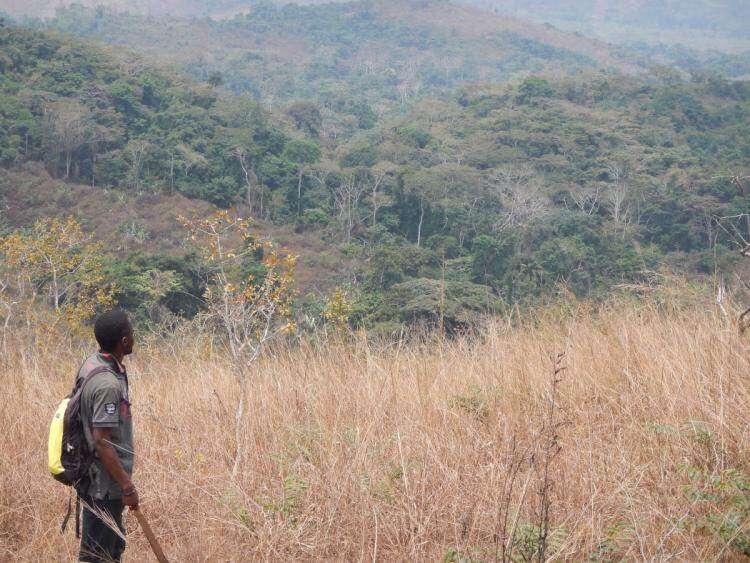The natural comeback of tropical rainforests in the savanna region

Artificial savanna naturally turns into tropical rainforest when annual burning regimes are discontinued. This is the conclusion of a natural experiment carried out by researchers from the RMCA, UGent, the WWF and INERA in the Manzonzi Savanna in the Democratic Republic of Congo. Together with the rainforest, it not only restores carbon storage capacity but also improves biodiversity. A model example for natural reforestation programmes in the region.
Loss of rainforest and carbon storage
Urbanisation, logging and the demand for farming lead to large-scale deforestation in Africa. Artificial savannas are created for cattle breeding and crop cultivation. The regular burning of vegetation in order to make the land workable, or to attract animals to fresh grass is common practice.
The less rainforest there is, the smaller the carbon storage capacity. Tropical rainforests contain half the world's vegetable carbon. They play an essential role in the regulation of the climate by storing excess CO2 from the atmosphere.
Natural recovery
A natural experiment in the Manzonzi Savanna near the Mayombe Forest in the extreme west of Congo has revealed that fire exclusion results in a natural recovery of tropical rainforest.
In order to study the transition from savanna to rainforest after the discontinuation of burning regimes, researchers investigated which tree varieties occurred in a 37.2 hectare study region. Over a period of four years the number of different tree species rose by 9 stems per hectare per year, whereas savanna species disappear at a rate of 16 stems per hectare per year, and that without any human interference.
150-year recovery time
The switch to a greater number of tree species increases carbon storage capacity. But nine years after burning was discontinued, this amounted to less than 5% of the average amount that an adult rainforest in the region can store. Ph.D. student Victor Deklerck (UGent/RMCA) calculated that "it will take at least 150 years before as much carbon is stored as in a fully-fledged tropical rainforest in Central Africa."
Commitment to carbon and biodiversity
Reforestation initiatives are an important strategy in combatting climate change. According to Deklerck, "our research provides evidence of the success of REDD+ programmes' (Recovering Emissions from Deforestation and Forest Degradation). In addition, it demonstrates that by focusing on natural recovery, carbon storage can go hand in hand with the preservation of biodiversity – as opposed to artificial and often homogenous plantations that put biodiversity under pressure. Nature is doing its job extremely well."
More information: V. Deklerck et al. Rate of forest recovery after fire exclusion on anthropogenic savannas in the Democratic Republic of Congo, Biological Conservation (2019). DOI: 10.1016/j.biocon.2019.02.027
Journal information: Biological Conservation
Provided by Ghent University




















